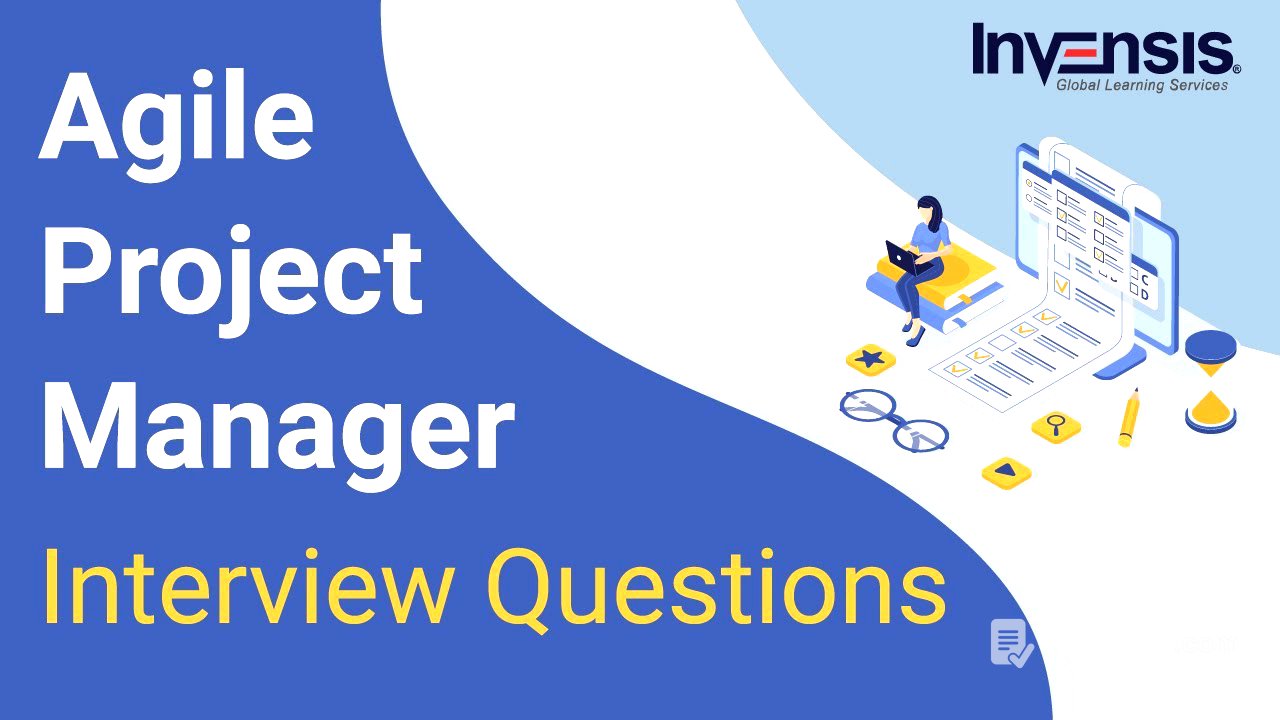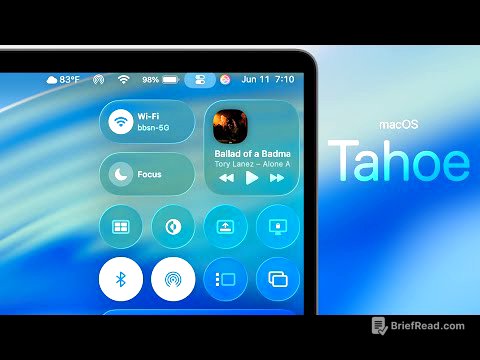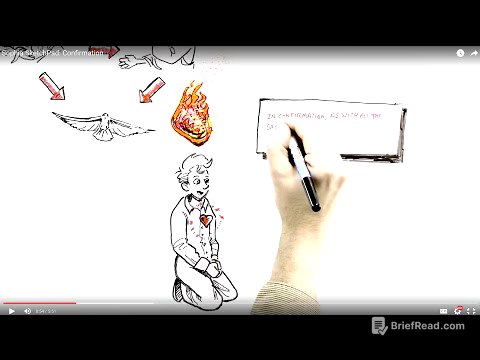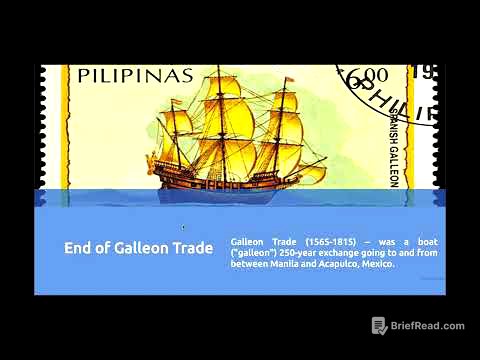TLDR;
This video provides a comprehensive guide to acing an Agile Project Manager interview. It covers fundamental and technical questions, as well as situation-based questions, offering insights into what interviewers look for in a candidate. The video also explains key Agile concepts, principles, and practices, along with common challenges and how to address them.
- Agile methodologies emphasize collaboration, flexibility, and continuous improvement.
- Agile frameworks share common aspects like fixed iteration lengths and self-organizing teams.
- Agile project managers need strong leadership, communication, and problem-solving skills.
Introduction to Agile Project Management [0:00]
Agile project management is a collaborative methodology that uses short development cycles called sprints to embrace flexibility and continuous improvement, leading to a better end product. It emphasizes team collaboration over hierarchical leadership, with self-organizing teams, transparency, and shared ownership. Interviewers seek candidates with rich domain knowledge and experience, making thorough preparation essential for an Agile project manager interview.
Fundamental and Technical Questions: Why Agile and Common Frameworks [1:46]
Agile is an iterative and incremental approach that breaks down complex projects into manageable chunks completed in smaller iterations. It is a collaborative approach that adapts to changing needs and optimizes workflow, providing a clear understanding of iteration goals and easily handling scope changes. Agile frameworks like Scrum, Kanban, Scrumban, Crystal, Lean Software Development, and Extreme Programming share common aspects such as fixed iteration lengths, lightweight approaches for self-organizing teams, and iterative development.
Agile Metrics and Planning Stages [2:44]
Popular agile metrics include velocity (estimating work speed and time), work category allocation (understanding team time investment), time coverage (time to develop and test iterations), business value (overall team efficiency), defect resolution rate (time to fix issues), cumulative flow diagram (project workflow representation), and defect removal awareness (proactive involvement in product development). Agile project planning is iterative, involving stages like product vision, product roadmap, release plan, sprint plan, daily scrum, sprint review, and sprint retrospective.
Perks of Agile Planning and Tools for Process Improvement [4:28]
Planning for agile implementation offers benefits like high product quality, customer satisfaction, increased project control, reduced risks, and faster return on investment. Tools used to improve process activities include flow charts, value stream mapping, comparing and baselining processes, cause and effect analysis, and hypothesis testing.
Disadvantages and Best Practices of Agile Methodology [5:02]
Disadvantages of the Agile model include difficulty in measuring project progress, no clear project end, increased time due to constant communication, unsuitability for small projects, higher total cost, and potential for projects to go off track if requirements are unclear. Agile best practices include iterative development (breaking projects into smaller chunks), reducing waste (removing non-value-added tasks), continuous improvement, scrum meetings (daily team meetings), sprint demo meetings (client feature demonstrations), and retrospective meetings (process improvement discussions).
Agile Manifesto: Values and Principles [7:31]
The Agile Manifesto outlines four values: individuals and interactions over processes and tools, working products over comprehensive documentation, customer collaboration over contract negotiation, and responding to change over following a plan. Agile principles include meeting customer needs, welcoming changes, good teamwork, motivating people, continuous feedback, focusing on active processes, face-to-face communication, working software, technical excellence, simplicity, self-organization, and adjusting strategies.
Triple Constraint Triangle and Work Breakdown Structure [8:47]
The triple constraint triangle includes time, cost, and scope, with quality at the center. A work breakdown structure (WBS) systematically arranges tasks by breaking them into manageable sections and tracking them over time, establishing a common understanding of project scope. The WBS has four levels: project title, control accounts, work packages, and activities.
User Stories and Key Roles in Agile Project Management [10:09]
A user story captures a feature's explanation from an end-user perspective, including who the user is, their intention, and the value the story brings. Key roles in agile project management include the Scrum Master (team guardian), Product Owner (visionary and stakeholder voice), Team Members (responsible for product creation), and Stakeholders (providing input and feedback).
Risk Management: Impact, Probability, and Common Risks [12:00]
Risk probability defines the chances of a risk occurring, while risk impact is the cost when the risk occurs. Common project risks include cost, schedule, resource, performance, market, strategic, legal, operational, governance, and external risks.
Release Candidates, Requirement Maintenance, and Estimation Techniques [12:36]
A release candidate is a code or build released for testing during the final development phase, equivalent to the final build but not for production deployment. Agile teams maintain requirements using a product backlog, with product owners prioritizing customer needs. Agile estimation techniques include poker editing, bucket system, dot voting, affinity mapping, order protocol, T-shirt sizes, TFB, and FC.
Agile Testing: Methodology, Methods, and Principles [13:39]
Agile testing follows agile principles and is a continuous process. Agile testing methods include behavior-driven development, acceptance test-driven development, exploratory testing, and session-based testing. Agile testing principles include simple code, less documentation, continuous feedback, and continuous testing, with development and testing teams actively involved throughout the process.
Applying Agile Methodology and Project Management Tools [15:02]
Agile methodology can be applied in various fields, especially where there is a lack of proper data and a need to complete projects with limited team members. Popular agile project management tools include Trello, VersionOne, Wrike, Jira, Asana, Yodiz, Zoho, GitHub, and ActiveCollab.
Latest Trends in Agile Project Management and Agile vs. Scrum [15:52]
Latest trends in agile project management include the influence of artificial intelligence and data intelligence, diverse approaches, and increased diversity in project management. Agile is a philosophy with an incremental and iterative approach, while Scrum is a specific agile framework with unique features, enabling teams to incorporate practices from other frameworks.
Sprint Backlog vs. Product Backlog and Scrum Cycle Duration [17:05]
The product backlog comprises all essential features for product development and is controlled by the product owner. The sprint backlog is a subset of the product backlog, containing items the team commits to completing in a given sprint. A Scrum sprint is a short, time-boxed period, typically lasting three to four weeks, during which the team works to produce a deliverable product.
Yesterday's Weather and Characteristics of a Good Product Backlog [17:49]
"Yesterday's weather" is a concept from extreme programming used to keep teams alert and avoid complacency during sprints, reminding them that the best prediction for the future is what they have done in the past. Good product backlogs are DEEP: Detailed appropriately, Emergent, Estimated, and Prioritized.
Agile Team Clarity, Impediments in Scrum, and Kanban [20:20]
Agile teams gain clarity on product backlog items through backlog refinement sessions with the product owner, detailing items planned for upcoming iterations. Impediments in Scrum are hurdles or obstacles the team encounters, such as lack of resources, knowledge, business conflicts, or technical issues. Kanban is a tool used to track the team's progress and work, providing a clear view of the current growth plan using a Kanban board.
Scrum of Scrums and Agile Approaches for Architecture and Design [21:55]
Scrum of scrums is a daily meeting where multiple scrum masters and product owners discuss work progress, ensuring all teams are aligned. The Nimble framework aligns with agile principles to manage architecture and design, providing collaborative approaches and flexibility.
Conducting a Sprint Retrospective Meeting [23:23]
The Scrum Master holds a sprint retrospective meeting to assess the entire sprint process, focusing on what went well, what didn't, and how to improve upcoming sprints. It's important to congratulate the team and allow each member to discuss their ideas.
Situation-Based Questions: Handling Projects and Proactivity [24:01]
When answering situation-based questions, showcase your agile skills, leadership quality, and team player abilities. Explain your project experience, emphasizing agile methodology and flexibility. Project managers should be proactive to predict threats and incorporate management strategies to reduce risks, track problems, and organize developer meetings.
Prioritizing Tasks and Handling Difficult Stakeholders [25:26]
Prioritization is essential in agile projects due to the time-boxed approach and fixed resources. List tasks, clarify priorities, determine importance, be adaptive, estimate efforts, and know when to decline requests. To handle difficult stakeholders, pay heed to their issues, overcome negative emotions, improve communication, appreciate their input, ask for suggestions, and be honest.
Leadership Styles and Defining an Ideal Project [26:39]
Leadership styles include delegative, supportive, directing, and coaching, which should be used based on the project and team. Before defining your ideal project, consider your interests, creativity allowance, preferred deadlines, comfort with new things, and preference for teamwork or working alone.
Identifying and Addressing Off-Track Projects [27:37]
Indicators of an off-track project include exceeding the budget, undefined goals, constant scope changes, and prolonged completion time. To address this, find the root cause, put in more effort, follow the original goal, adjust resources, and connect with clients and stakeholders.
Handling Team Workload and Monitoring Delegated Responsibilities [28:25]
To handle team workload, analyze work distribution, optimize for overburdened workers, assign tasks to lesser-burdened employees, and upskill all employees. Monitoring delegated responsibilities involves understanding team member strengths and weaknesses, tracking progress using spreadsheets, and conducting one-on-one meetings for better communication.
Addressing Customer Dissatisfaction and Promoting Team Diversity [29:53]
To handle unsatisfied customers, make them feel valued, understand their reasons for dissatisfaction, figure out required modifications, and communicate with the team. To promote team diversity, include every team member, understand them at a personal level, prepare constructive feedback, ensure equality, enforce a zero-tolerance policy for bias, and create team spirit.
Overcoming Challenges and Choosing Communication Methods [31:18]
When discussing past project challenges, be honest and confident, focusing on your problem-solving approach and what you learned from mistakes. Choose communication methods based on the team and project, including personal interaction, responsive communication, electronic communication, and written mediums.
Agile Project Manager's Routine [32:26]
An agile project manager's routine includes planning activities, attending daily stand-up meetings, setting up technical discussions, updating project status, reviewing issue and risk registers, following up on outstanding issues, attending client meetings, and planning for the next day's activities.









